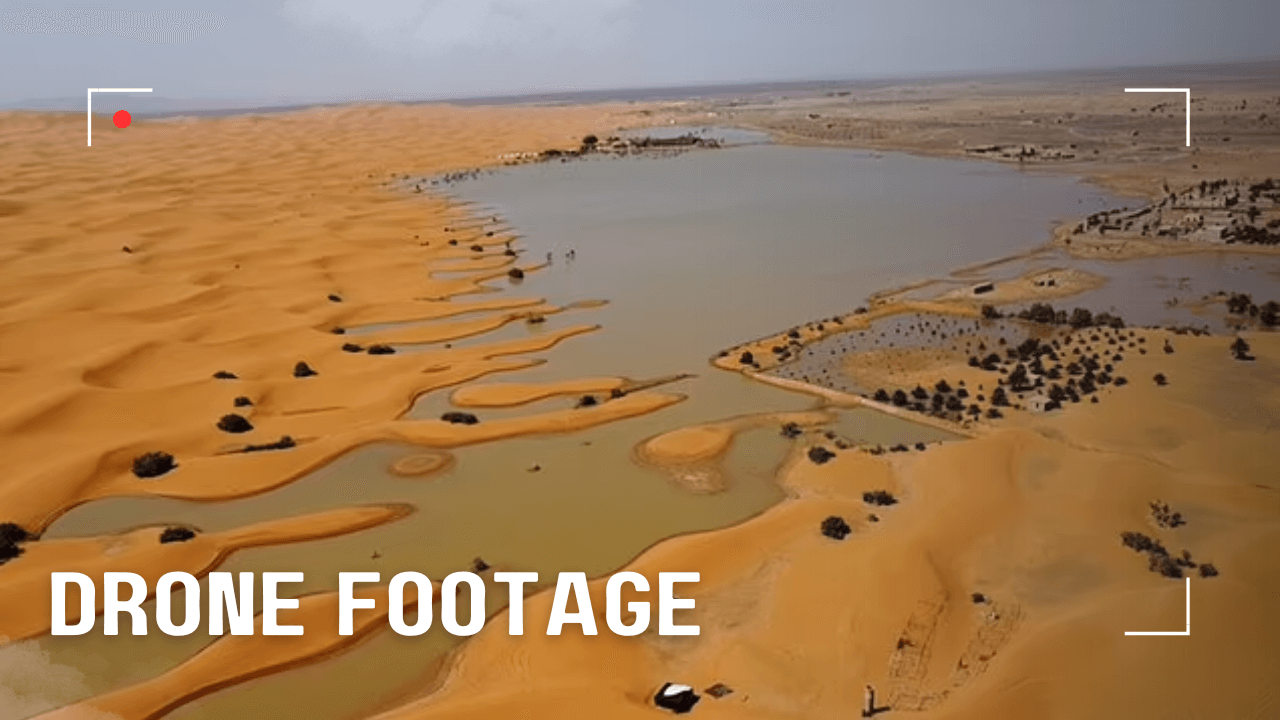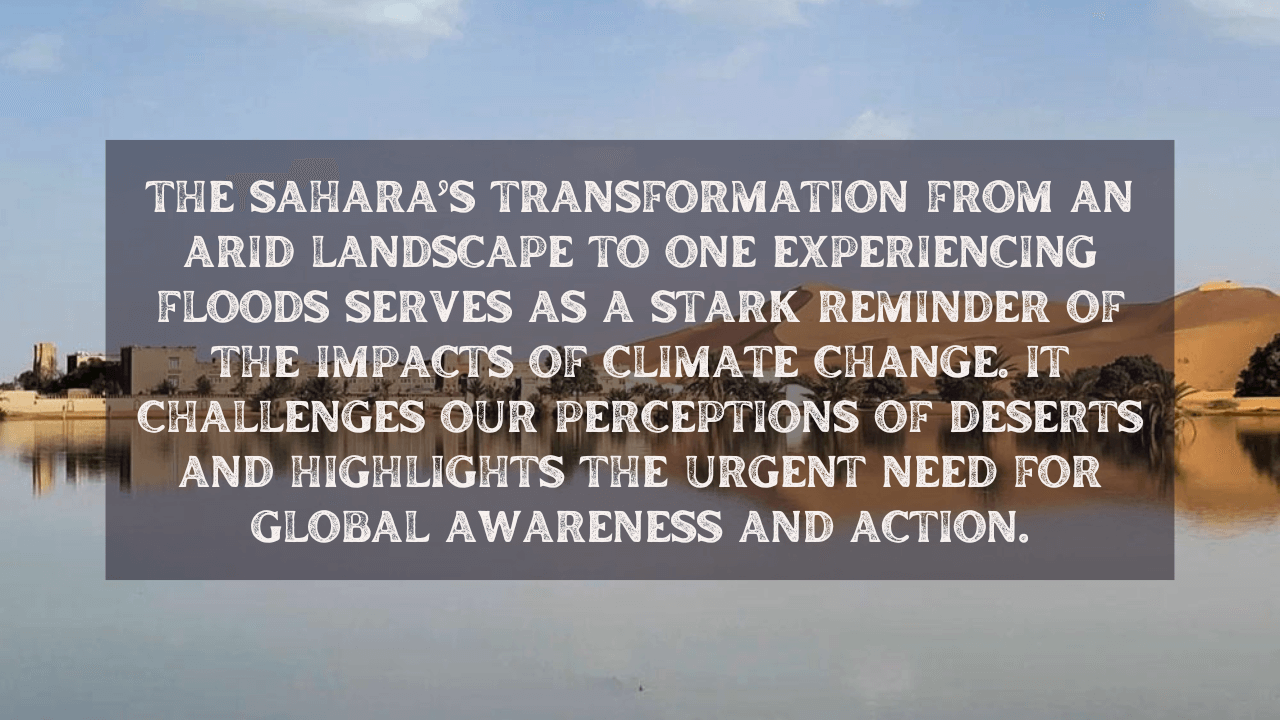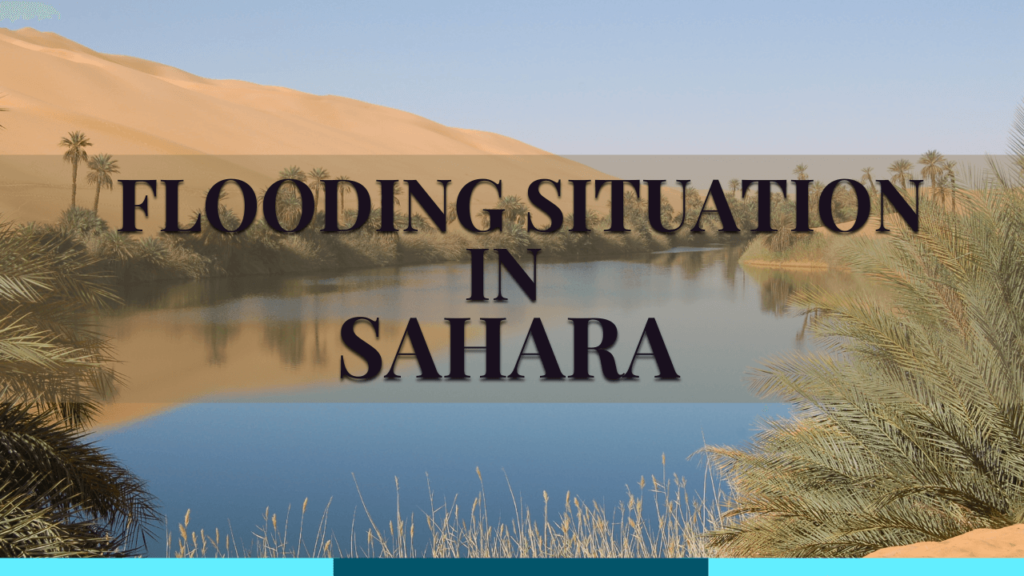When you think of deserts, images of endless sand dunes and scorching sun typically come to mind. But did you know that the Sahara Desert, the largest hot desert in the world, is experiencing an unexpected phenomenon: flooding? While it may sound paradoxical, this dry expanse has witnessed increasing instances of heavy rainfall and flooding in recent years. Let’s dive into the reasons behind this surprising shift and its impacts on the region and its inhabitants.
The Unprecedented Floods
In September 2024, the Sahara witnessed a rare and intense weather phenomenon. An extratropical cyclone, a storm system originating over the Atlantic, pushed moist air into the northern Sahara, leading to heavy rainfall in regions that usually receive minimal precipitation. Southeastern Morocco, particularly the town of Merzouga, recorded more than 100 millimeters (4 inches) of rain in a single day, an event that led to the formation of lakes in areas that had been dry for decades. What’s Causing the Flooding?
What’s Causing the Flooding?
- Climate Change: The Hidden Driver
One of the primary reasons for the recent flooding in the Sahara is climate change. As global temperatures rise, the atmosphere becomes warmer and can hold more moisture. This leads to an increase in the intensity and frequency of rainstorms. What might have previously been a rare event is now becoming more common, with sudden downpours overwhelming the dry landscape.
- Unpredictable Weather Patterns
In addition to climate change, shifting weather patterns play a crucial role. The Sahara’s weather is influenced by the seasonal monsoon winds that blow from the Atlantic Ocean. As these patterns change due to global warming, they can push wetter conditions further north into the desert, resulting in heavy rains where there was once only parched earth.
- Desertification and Land Use Changes
Interestingly, human activities, such as deforestation and unsustainable agricultural practices, can exacerbate the effects of flooding. As vegetation is removed, the soil loses its ability to absorb water, leading to increased runoff and a greater likelihood of flooding.
The Human Impact: More Than Just a Wet Surprise
The flooding in the Sahara has profound implications for the people living in and around the desert. Here’s how:
- Displacement of Communities
Sudden floods can lead to the displacement of communities, particularly in rural areas where infrastructure is limited. Homes can be destroyed, and livelihoods disrupted, forcing people to flee in search of safer ground.
- Agricultural Challenges
For many inhabitants of the Sahara, agriculture is a primary source of livelihood. Flooding can wash away crops, ruin fields, and contaminate water supplies, leading to food shortages and economic instability. Farmers who rely on predictable weather patterns find their crops increasingly vulnerable to the unpredictable nature of flooding.
- Health Risks
Flooding can also pose serious health risks. Stagnant water creates breeding grounds for disease-carrying insects, such as mosquitoes, increasing the risk of diseases like malaria. Moreover, the contamination of water supplies can lead to outbreaks of waterborne illnesses, further straining already vulnerable communities.
Looking Ahead: The Future of the Sahara
As the Sahara continues to experience these unexpected floods, scientists warn that this trend could become more pronounced in the coming years. Without significant action to combat climate change and its effects, the delicate balance of life in the Sahara is at risk. Did You Know? The Sahara’s transformation from an arid landscape to one experiencing floods serves as a stark reminder of the impacts of climate change. It challenges our perceptions of deserts and highlights the urgent need for global awareness and action.
Conclusion
The flooding of the Sahara Desert is not just an environmental curiosity; it’s a wake-up call about the interconnectedness of climate, weather, and human life. As we confront the realities of a changing planet, understanding these dynamics is crucial for developing effective strategies to support vulnerable communities and protect fragile ecosystems. The Sahara, once seen as a symbol of desolation, is now at the forefront of climate change discussions—a testament to the fact that even the most arid places can experience unexpected transformations.
As we confront the realities of a changing planet, understanding these dynamics is crucial for developing effective strategies to support vulnerable communities and protect fragile ecosystems. The Sahara, once seen as a symbol of desolation, is now at the forefront of climate change discussions—a testament to the fact that even the most arid places can experience unexpected transformations.
Written By: –

Rtr. Mimico Matharage
(Junior Blog Team Member 2024-25)
Edited By: –

Rtr. Sumaiya Sadeek
(Senior Blog Team Member 2024-25)


